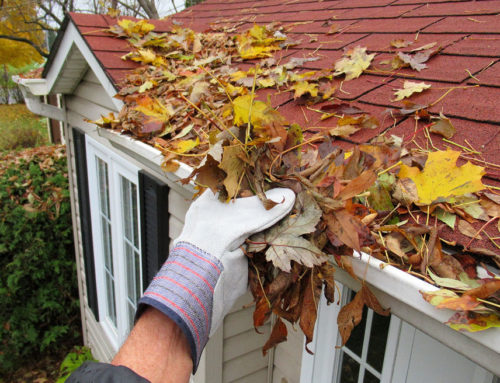Saskatchewan’s Motto “Land of the Living Skies” was aptly named to represent our wide open skies and landscape providing beautiful views of sunsets & sunrises, flocks of migrating birds, powerful rolling thunderstorms and sometimes the gorgeous Northern Lights.
Perhaps one of our least favourite parts of our open skies and landscape though is that pesky air movement that we call ‘Wind’ which can disrupt our lake enjoyment time, affect golf games scores in the summer and create visibility challenges with drifting snow in the winter. Strong winds can also cause possible damage to structures throughout the province especially from strong gusts and dangerous wind during thunderstorms.
What a lot of homeowners don’t know is that winds can also play havoc with the insulation in your home’s attic. This is known as “wind wash.”
What is Wind Wash?
Wind wash is caused by airflow coming through the soffits or roof vents into your attic space. Gusts can push loose-fill insulation out of place, causing bare spots and uneven insulation.
In a normal insulated attic space, the loose-fill insulation should be fairly even throughout (as shown in the image below).
What Happens When Wind Wash Goes Untreated?
When pockets of the attic are not evenly covered in insulation filler, you may notice that the room below the space becomes noticeably cooler.
Warm air from the room below these areas will meet cold air from the attic above which could create condensation in the form of frost and/or moisture spots on the ceiling. These will most likely appear during cold harsh winter days or during the warmer days after a cold spell, especially during the spring melt.
Checking Your Attic Space
As part of your homeowner maintenance, it is crucial to regularly inspect your attic space for wind wash especially after any significant windy days and/or storms to avoid the natural condensation creation from warm moist air from inside the home hitting the cold dry air from the attic.
It may be intimidating for homeowners to go into the attic while avoiding it could result in damage throughout your home. Before you enter your attic, it is crucial that you prepare properly and proceed safely. Here are some tips:
- Have a partner spot you on any ladder and remain close by when you enter the attic.
- Bring a flashlight.
- Wear a dust mask.
- When walking around you may pack down the insulation; check behind you and cover your tracks. Only walk on the Trusses as the ceiling drywall will not support you!
- Watch your step! There may be gas lines, electrical lines, ductwork for central air and heating, bathroom exhaust fans, plumbing pipes and more in your attic space.
How to Repair Wind Wash
You can usually redistribute the insulation back into the uncovered areas by raking it into the bare (or thin) spot and levelling out the surrounding area.
If you notice that wind washing continues in the same area, then you may try replacing a batt of insulation (the pink rolls of insulation) over top of the loose-fill insulation to keep that area covered.
Checking for wind wash can help you to ‘weather’ swinging winter temperatures we find in Saskatchewan.
What do we do to help prevent wind wash?
Pacesetter Homes adds insulation stops and baffles (air flow chutes) to help prevent the excess airflow in the home’s attic space. In Saskatoon, insulation stops are added around the exterior of the attic to direct airflow upwards above the insulation. In Regina, we use an OSB barrier to prevent the insulation from falling into the soffit as well as chutes to direct the airflow upwards so it doesn’t disrupt the insulation. These are common industry standards in Saskatchewan as well as what is required by building code.
Is this Covered under Warranty?
This may not be covered under warranty by a home builder since it is impossible to completely mitigate all external weather factors that cause this wind wash. Pacesetter Homes certainly intends to help educate and help you through the first year of ownership on this item while ultimately it will be up to each homeowner to continue monitoring their attic on an ongoing basis.





